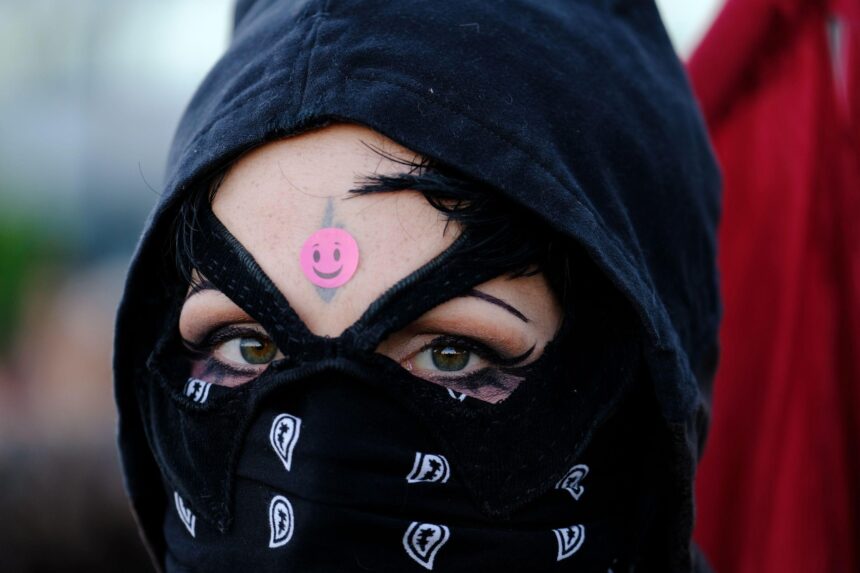Antifa a ‘Terrorist Organization’? Good Luck Figuring That Out
In recent years, Antifa has become a lightning rod in the ongoing debate over political extremism in the United States. Labelled by some lawmakers as a “terrorist organization,” this loose collection of anti-fascist activists has sparked a maelstrom of controversy and polarizing opinions. Proponents argue that Antifa’s aggressive tactics against far-right groups merit such a classification, while opponents contend that the term is misapplied and undermines legitimate dissent. As political rhetoric intensifies and social media platforms amplify both accusations and defenses, untangling the various threads of this complex issue becomes imperative. In this article, we will explore what constitutes a terrorist organization, examine Antifa’s actions and ideologies, and shed light on the implications of labeling such groups in today’s charged climate. Determining whether Antifa fits this controversial designation is not just an academic exercise; it strikes at the heart of how society grapples with dissent, extremism, and the boundaries of free speech.
Debating Antifa’s Classification: The Legal and Political Landscape
The debate surrounding the classification of Antifa as a terrorist organization poses significant challenges, both legally and politically. Supporters and detractors alike find themselves entrenched in perspectives shaped by broader social and ideological divides. Some argue that Antifa’s confrontational tactics, especially during protests, validate its designation as a threat to public safety. This categorization gains traction amidst rising concerns about political violence in recent years. Meanwhile, critics assert that labeling Antifa as a terrorist organization fails to acknowledge the group’s self-identification as antifascist activists opposing right-wing extremism. They contend that framing Antifa in such terms overlooks the complexities of contemporary political protests.
Navigating the legal landscape further complicates the issue. In the United States, the government has specific criteria for classifying organizations as terrorist entities, generally requiring evidence of systematic violence with intent to intimidate or coerce civilians. Activists argue that Antifa does not fit this definition, particularly because its actions often focus on confronting hate groups rather than propagating violence. To illustrate the divergent opinions on this topic, consider the following table summarizing key arguments on either side of the debate:
| For Classification | Against Classification |
|---|---|
| Use of Violence: Involves clashes with opposing groups. | Defensive Action: Primarily acts in response to perceived threats. |
| Public Safety: Seen as a risk to community safety. | Focus on Anti-Fascism: Advocates for social justice and anti-racism. |
| Political Extremism: Connected to broader issues of political violence. | Multifaceted Movement: Comprises various factions with differing goals. |
Understanding the Implications of Labeling Antifa a Terrorist Organization
Labeling Antifa a terrorist organization carries profound implications for civil liberties and the legal landscape in the United States. This label can shift public perception, influencing how individuals interpret the actions of those associated with the movement, often leading to blanket stereotypes that can unfairly stigmatize peaceful protesters. Critics argue that such classification breeds an environment of fear and hostility, potentially justifying increased police action and surveillance against those who advocate for social justice and anti-fascism. As society navigates through contentious political waters, the meaning of “terrorism” itself comes into question, raising concerns about overreach and the erosion of fundamental rights.
Furthermore, the implications of this classification extend to policy-making and law enforcement. Targeting Antifa with a terrorist designation may lead to differences in funding for local law enforcement agencies or shifts in federal resources, potentially prioritizing counterterrorism measures over community engagement and support. The conversation also invites a closer examination of how other groups, especially ones with more mainstream recognition, are treated under similar circumstances. Below is a comparative table that highlights some distinctions:
| Criteria | Antifa | Other Groups |
|---|---|---|
| Perception | Radical | Conventional |
| Media Representation | Negative | Varied |
| Government Action | Increased scrutiny | Relatively stable |
| Public Support | Divided | More unifying |
Strategies for Addressing Extremism without Oversimplifying the Narrative
Addressing the complex issue of extremism necessitates a nuanced approach that avoids reductive labels. While groups like Antifa have been characterized by some as a “terrorist organization,” such categorizations often ignore the multifaceted nature of political protest and the motivations of individuals involved. To effectively mitigate extremism, it is imperative to look beyond binary narratives and consider the broader socio-political context. Engaging in open dialogue, promoting understanding of ideological roots, and involving community leaders can create a more comprehensive strategy aimed at combating hate while respecting fundamental rights.
Strategies that transcend oversimplification might include:
- Educational Programs: Offering workshops that explore the history and ideology of radical movements, fostering critical thinking among participants.
- Community Engagement: Encouraging civil discourse and collaboration among diverse groups to build bridges rather than walls.
- Policy Advocacy: Supporting legislation that addresses the underlying socio-economic factors contributing to radicalization, such as inequality and lack of opportunities.
The commitment to a more nuanced discussion should also reflect in media portrayals. Acknowledging the spectrum of actions and beliefs within activist groups can help prevent stigmatization and promote peaceful resolutions. Below is a simple table illustrating various facets that should be taken into account while discussing extremism:
| Aspect | Considerations |
|---|---|
| Motivation | Understanding personal and collective grievances that drive individuals towards extremist ideologies. |
| Context | Examining the socio-political landscape that influences radical activity. |
| Response | Developing community-led initiatives that promote dialogue and reconciliation. |
In Retrospect
In conclusion, the debate surrounding Antifa and its designation as a “terrorist organization” reveals deep divisions in American society and politics. As policymakers grapple with issues of domestic extremism and civil liberties, clarity remains elusive. Whether through legal definitions, public perception, or the actions of various factions, the complexities of Antifa as a movement and its critics demonstrate just how charged and multifaceted this conversation has become. With ongoing discussions about the balance between protecting free speech and ensuring public safety, it is evident that understanding the nuances of this topic is more important than ever. As the country continues to engage with these pressing issues, one thing is clear: the conversation surrounding Antifa is far from resolved, and the implications of these discussions will resonate for years to come.









